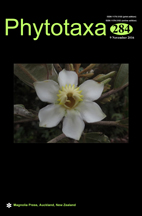Abstract
Achnanthidium sinense sp. nov., a new diatom species from the Wuling Mountains Area, central China, was studied by light and scanning electron microscopy. The valvar dimensions of this species are relatively large with respect to average Achnathidium taxa. The valves are narrowly lanceolate with round, acute apices. Only a few striae in the middle part of both valves can be resolved under light microscopy. The axial area of raphe valve is linear-lanceolate and the distal raphe fissures hook towards the same side of the valve. Striae are slightly radiate throughout both valves except at the apices of the raphe valve, where they become parallel or slightly convergent. The number of areolae in each stria on the rapheless valve is usually greater than that on the raphe valve (1–7 vs. 1–6). Around the central areas of both valves, sometimes short marginal striae composed of 1–3 areolae are present. Valve mantle possesses a row of slit-like areolae and 2–3 notches. A. sinense is compared with the similar species A. exile and other large species. A. sinense is epilithic and lives in freshwater habitats.

